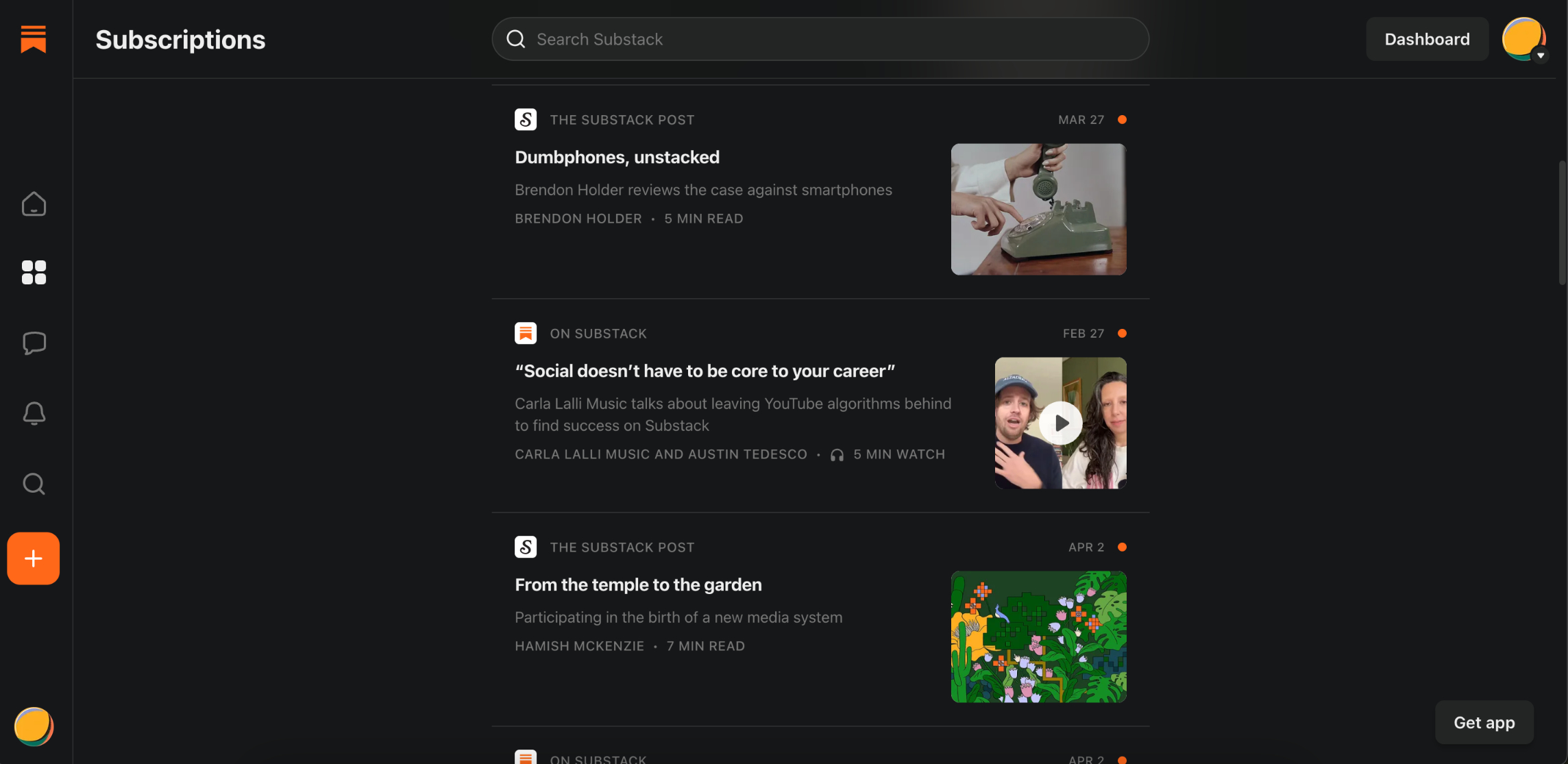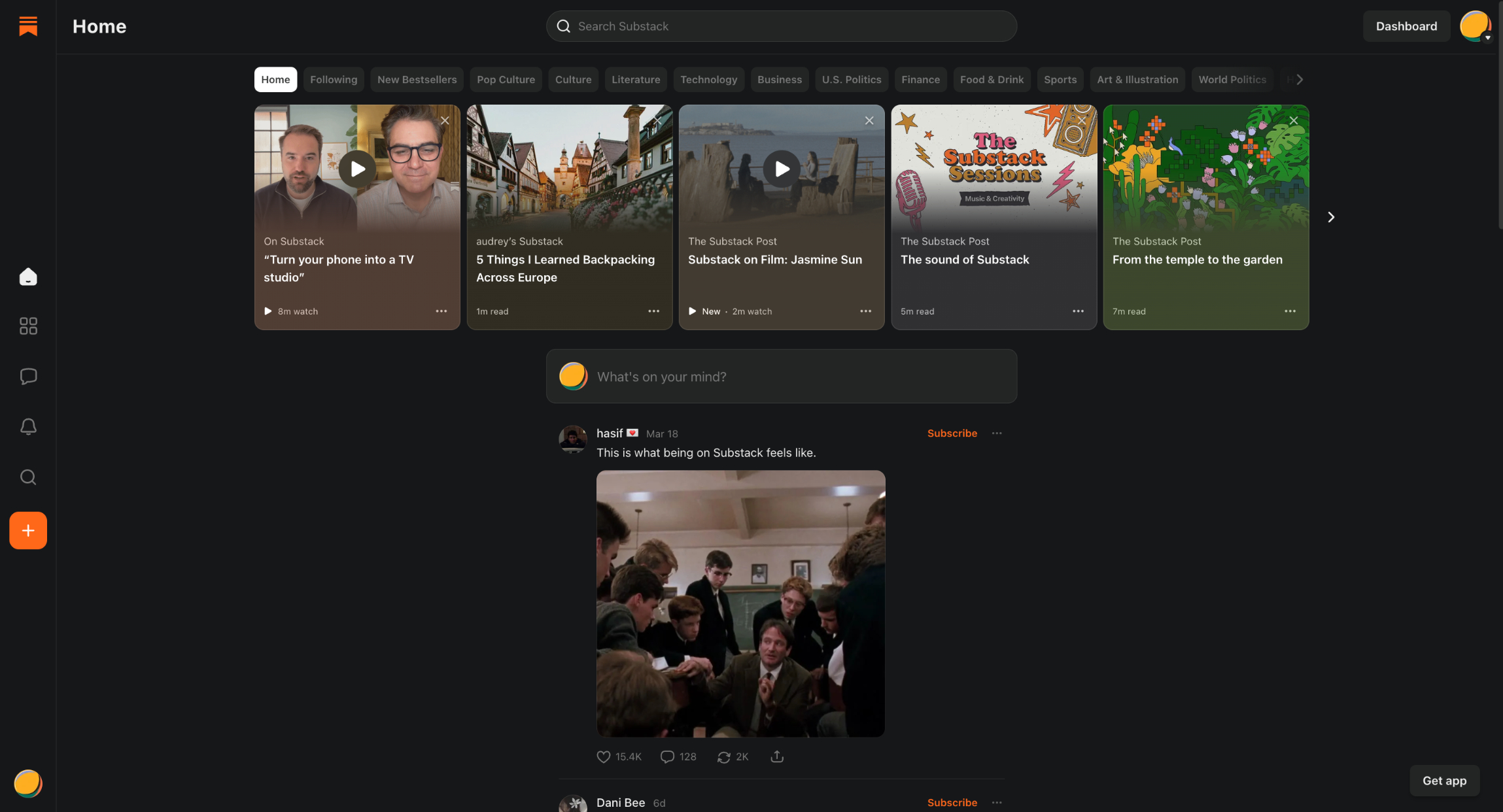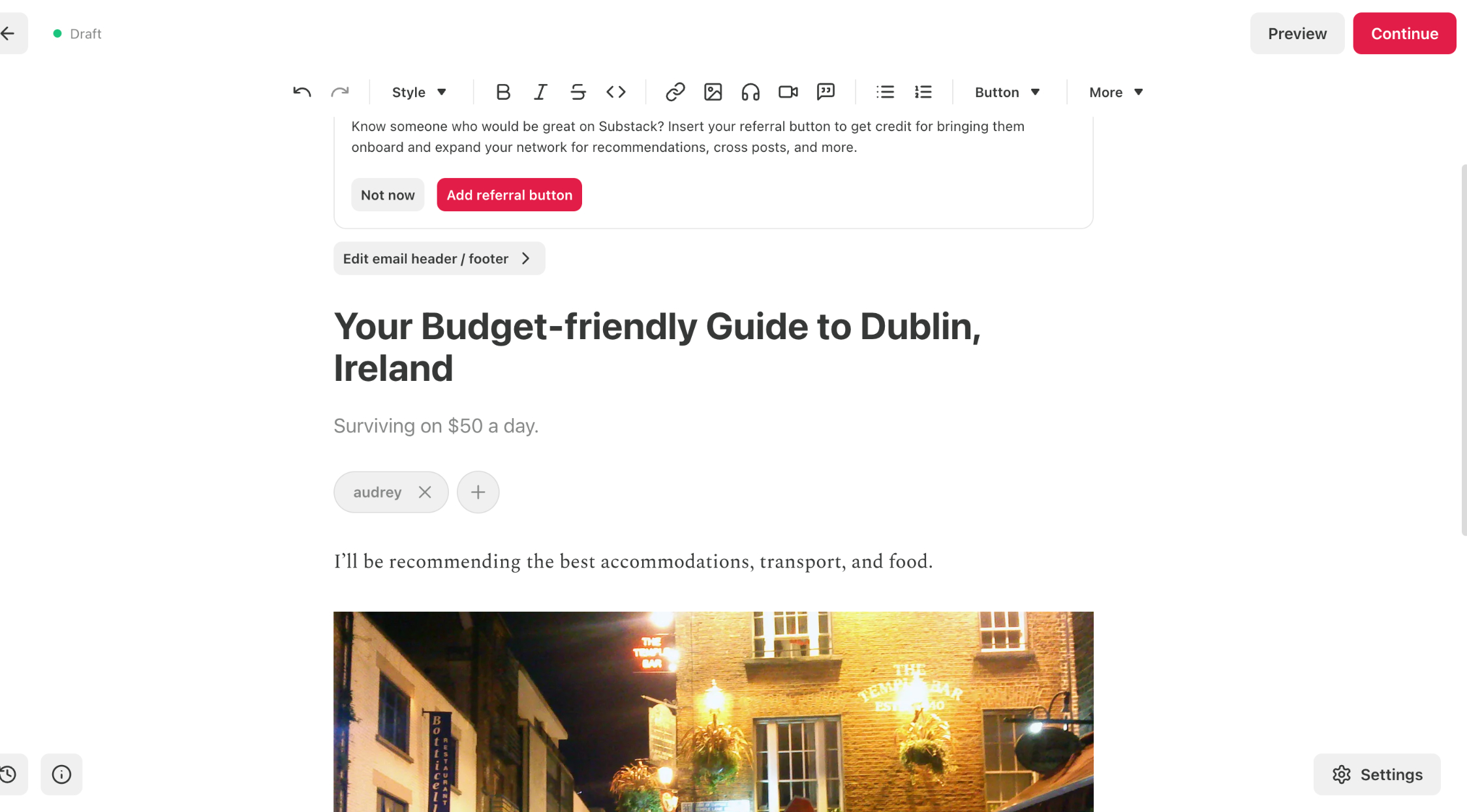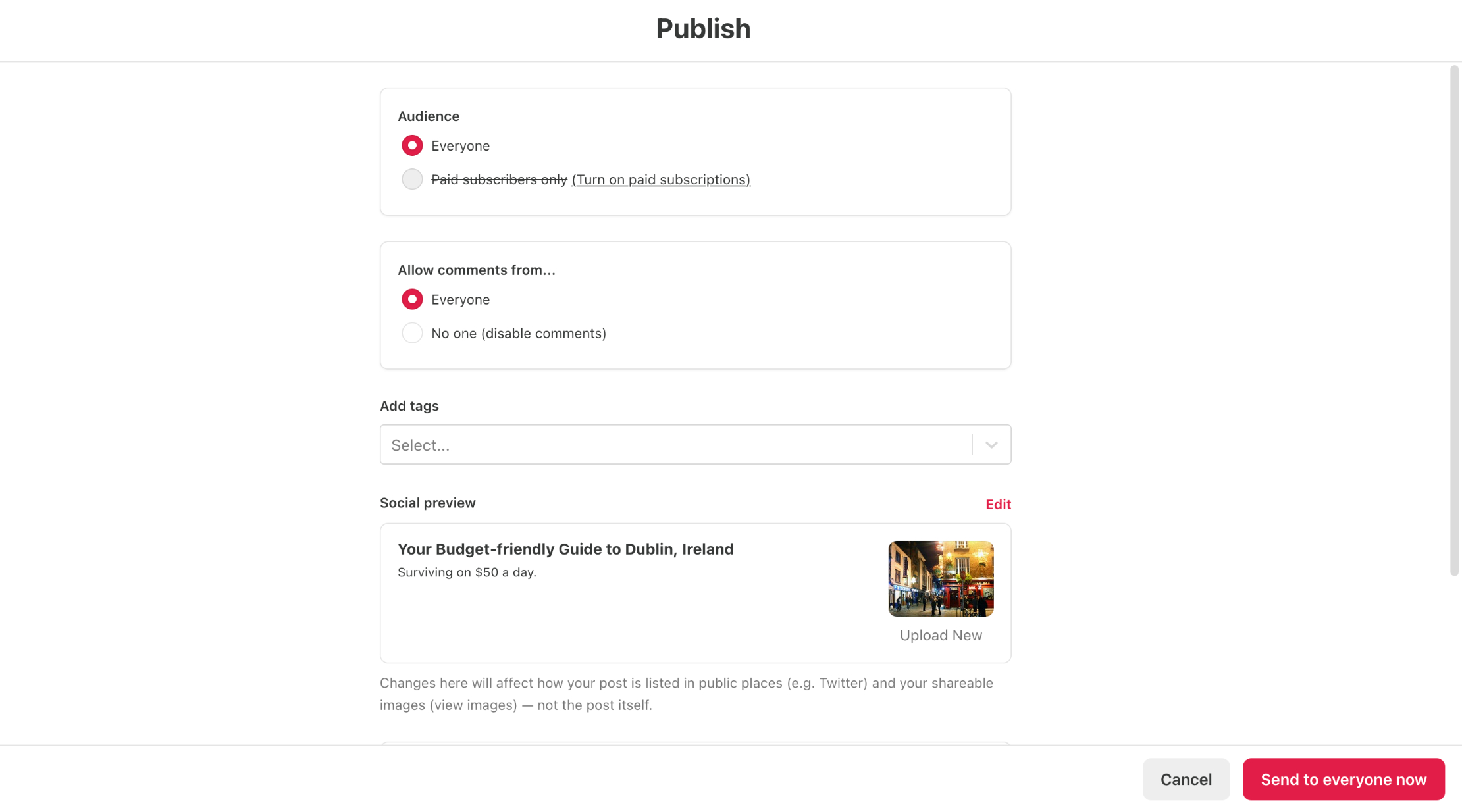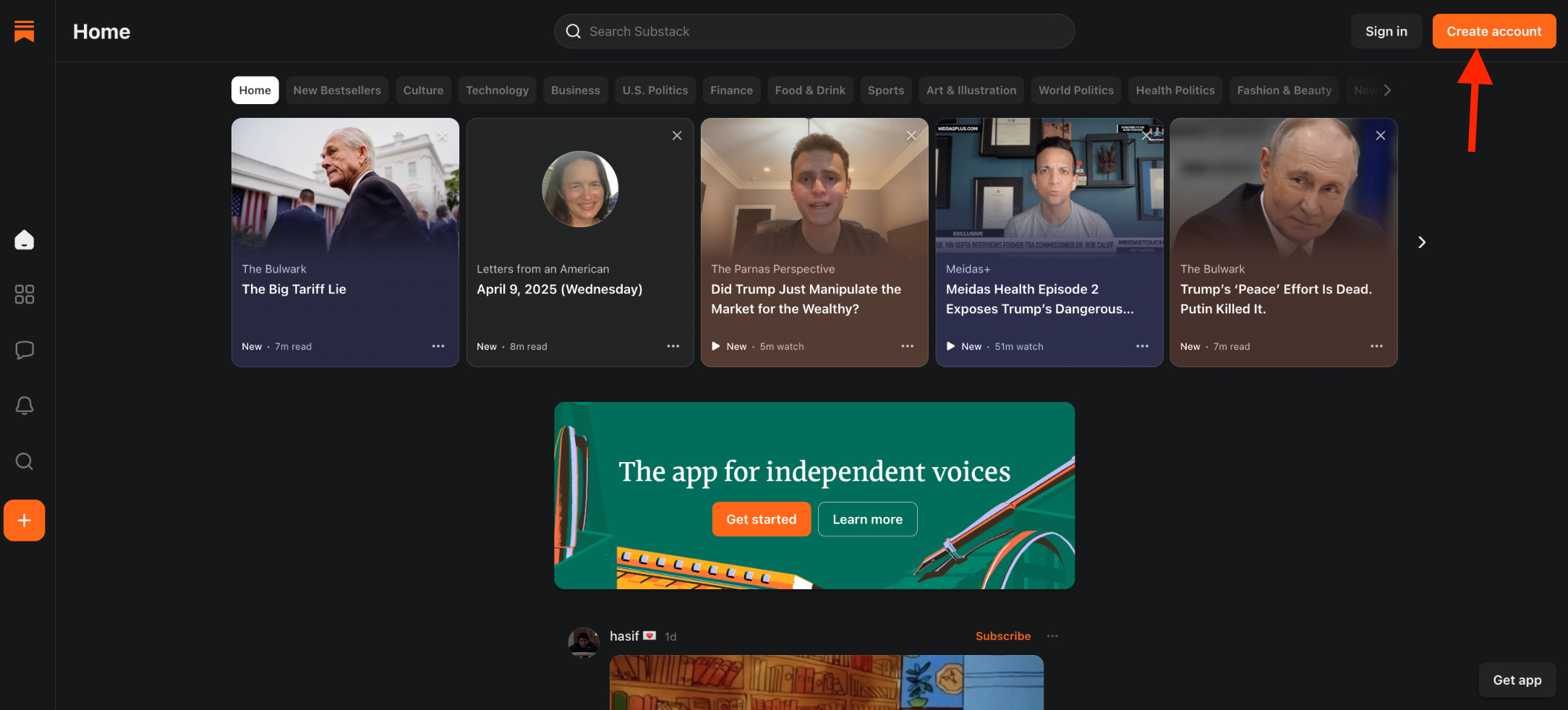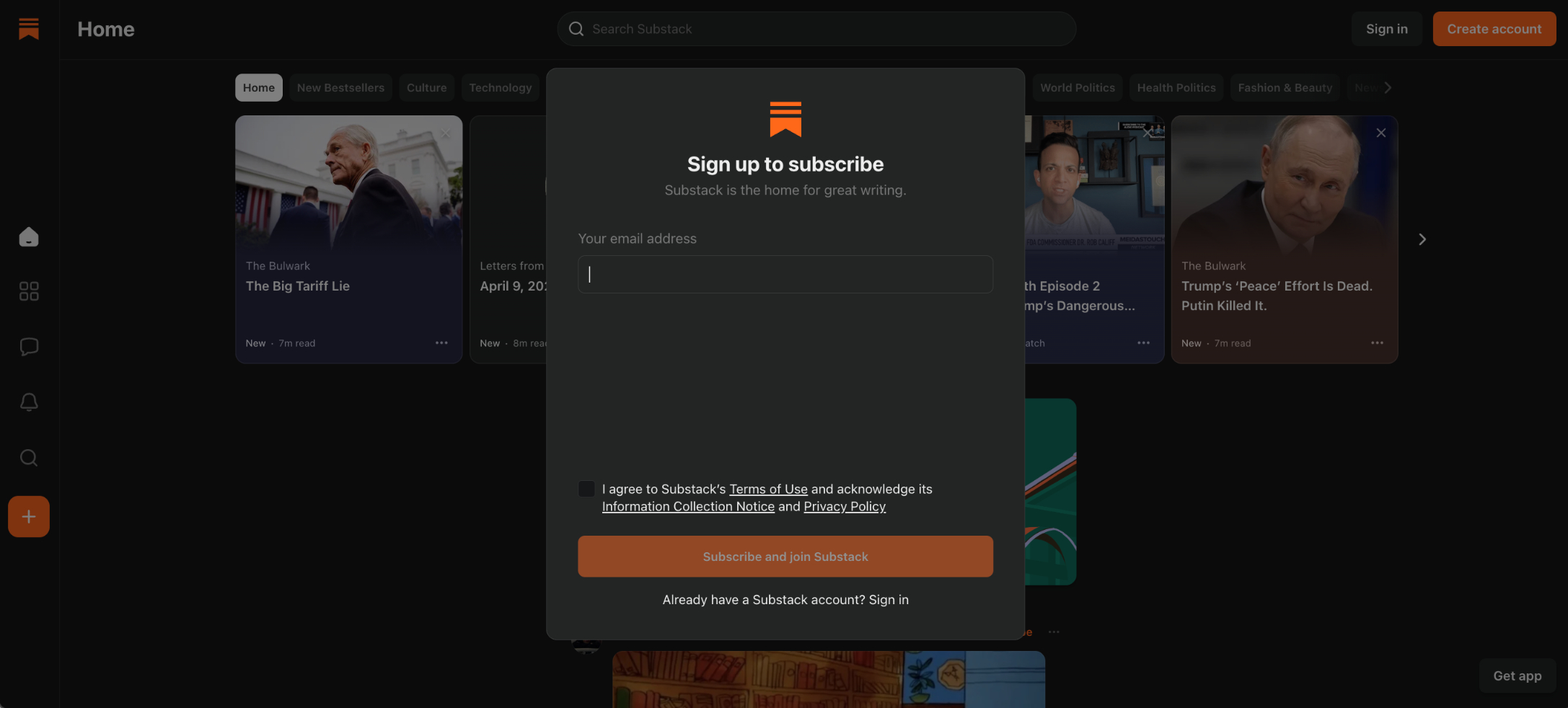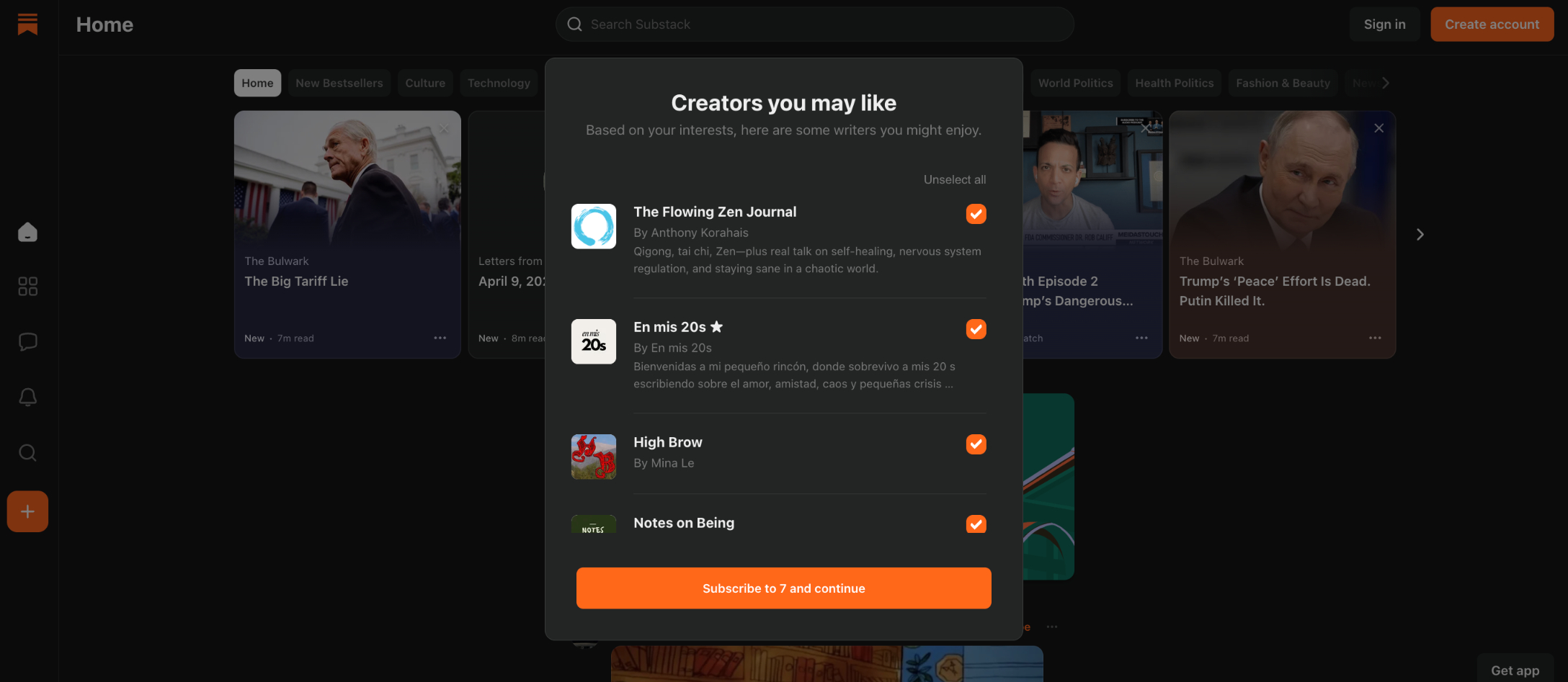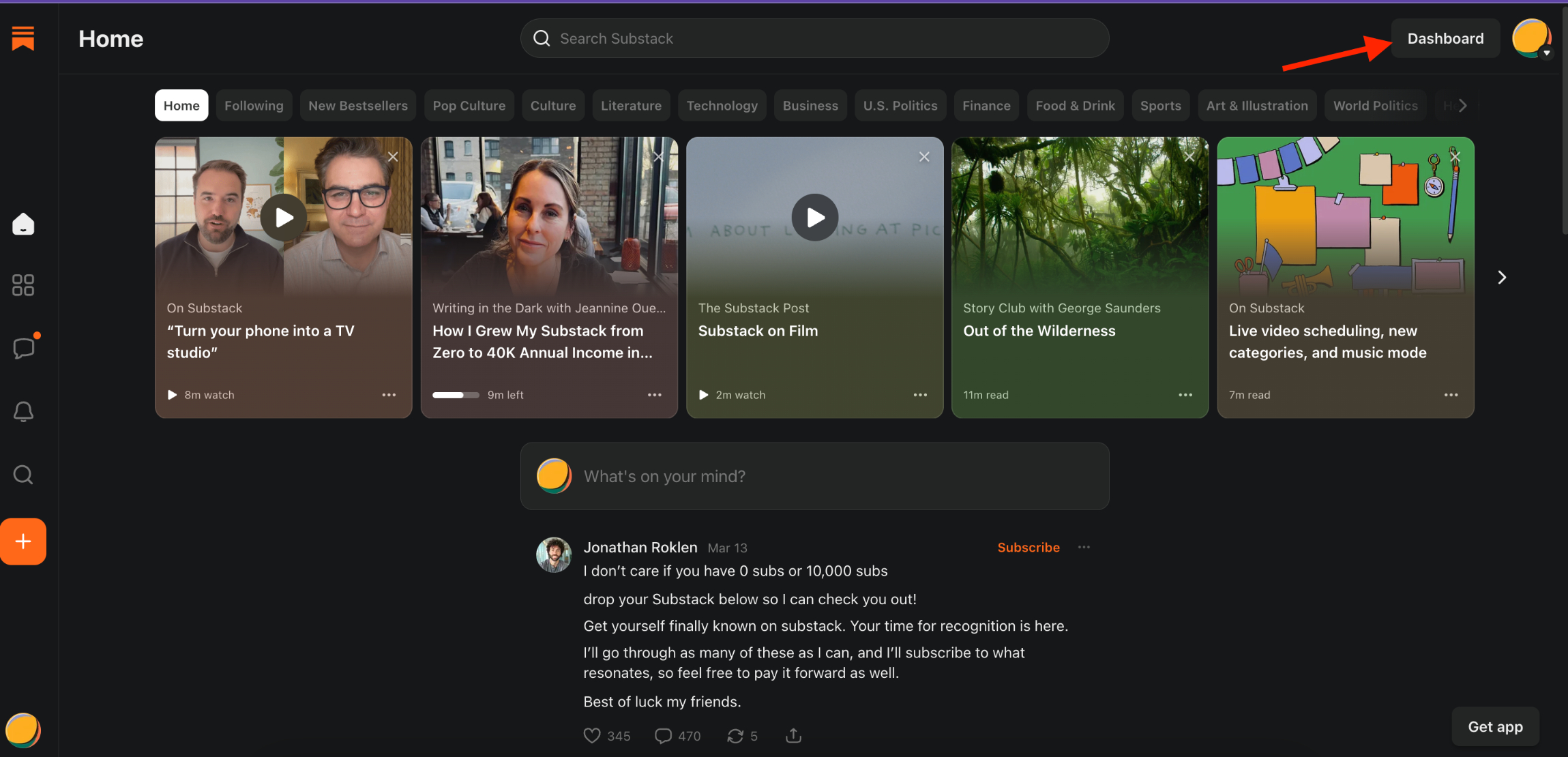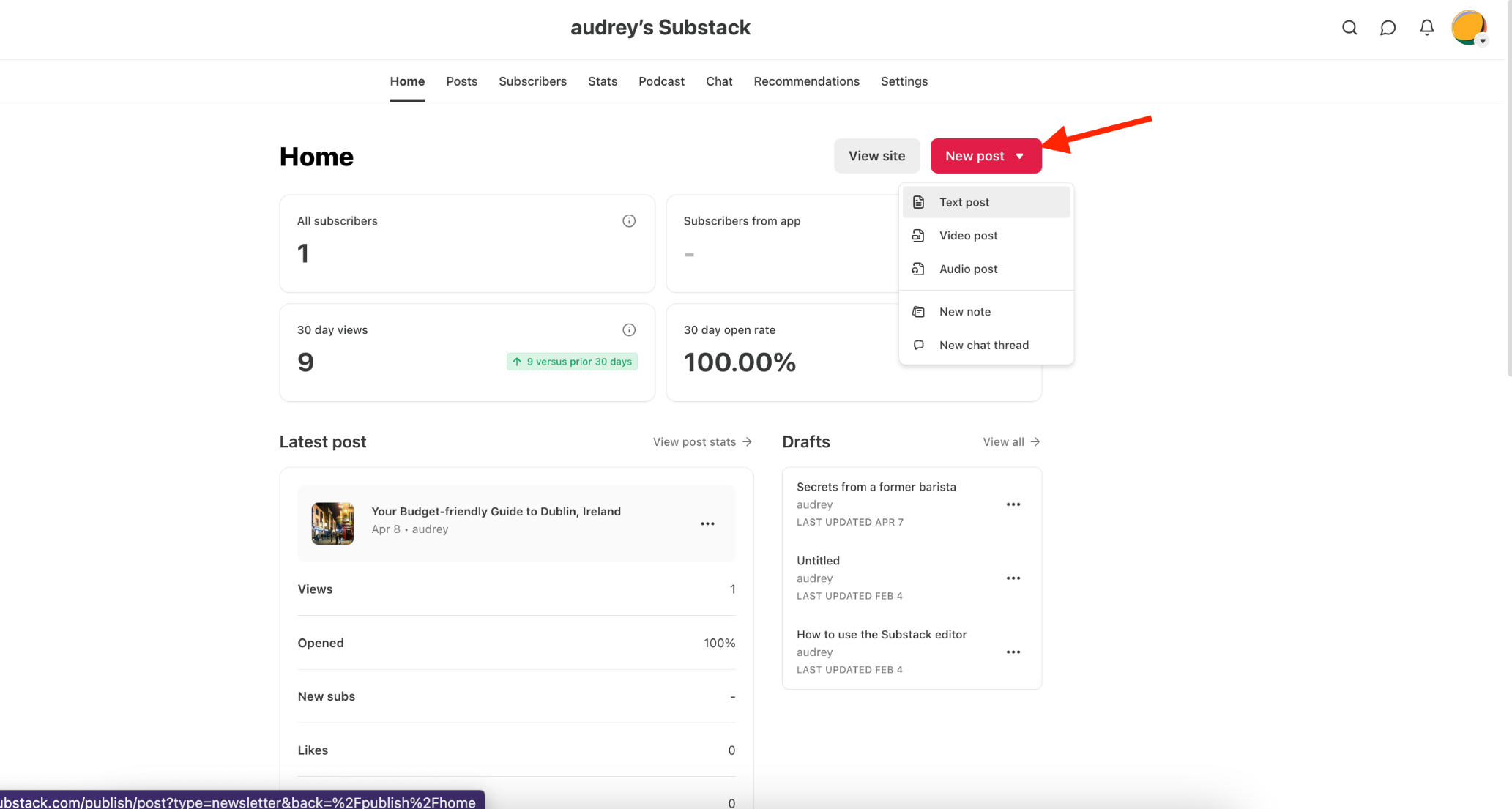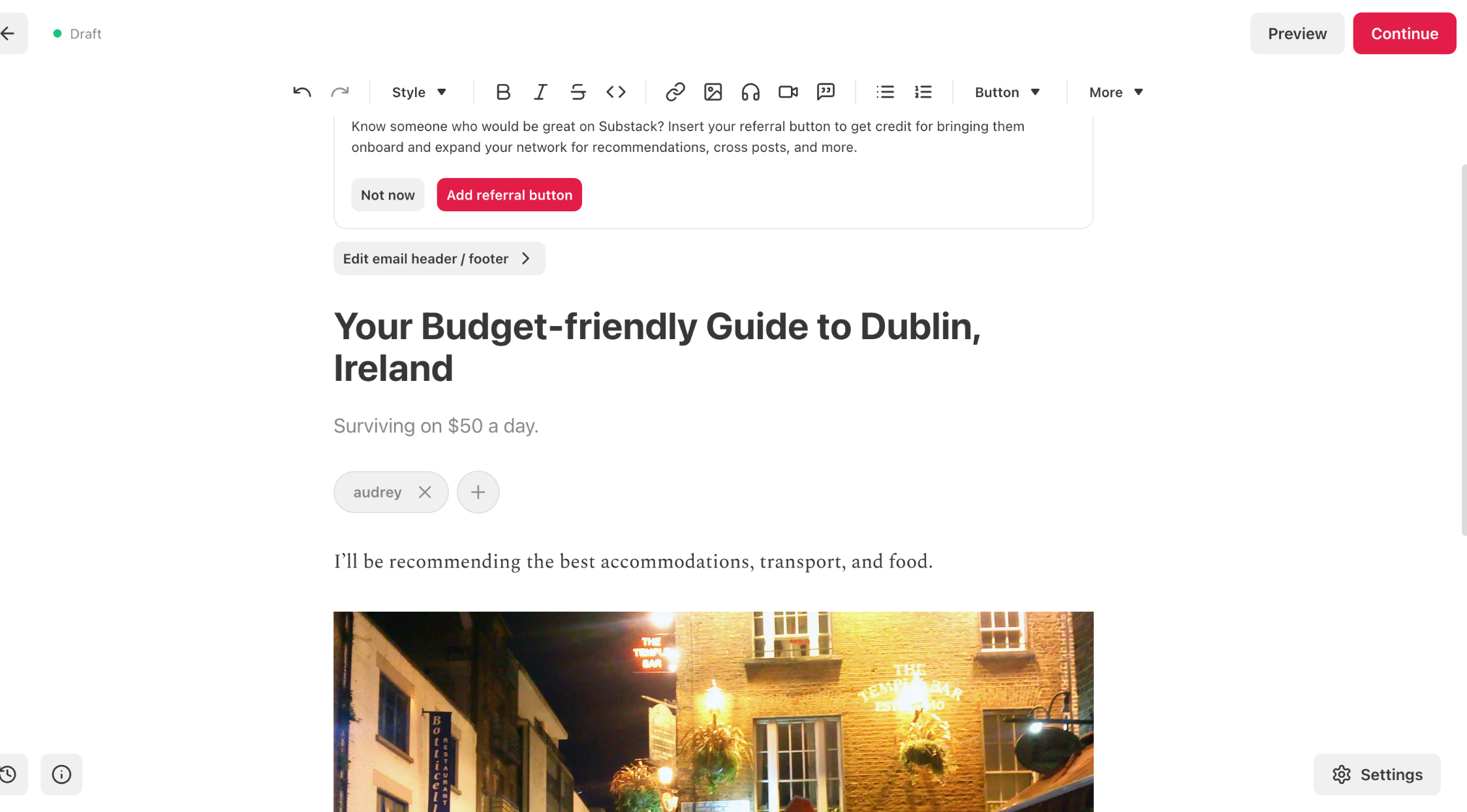Content marketing in 2025 is less about constantly reaching new audiences than building stronger relationships with the ones you already have. That’s why one platform I’ve had my eye on for a while now for small businesses and creators is (drum roll, please) Substack.
Substack is an online blogging platform that lets people read your content for a monthly subscription fee. It also automatically sends your blogs as newsletters to your subscribers each time you publish. But you can also publish blogs for free. It’s completely free to create an account and start publishing blogs — the amount you earn is based on the subscription fee you set.
One of the reasons I recommend it to small businesses and creators, especially the latter, is it gives you a direct revenue stream from fans instead of relying on an algorithm to get your content discovered. I break down what is Substack and how does it work in more detail below.
Substack key facts:
- It’s an online publishing platform for bloggers, writers, and journalists to reach readers directly.
- Subscribers pay a monthly subscription fee (minimum $5) to access paid content, although you can also publish free blogs. Substack takes a 10% cut from your earnings.
- Offers a direct way to reach and earn from subscribers instead of relying on an algorithm.
What is Substack?
Substack is an online publishing platform that lets creators publish blogs for subscribers. Many independent writers, journalists, bloggers, and influencers use Substack to publish and send articles directly to subscribers’ inboxes, creating a direct line between them and their audiences.
As a marketing tool, it can help you build an engaged audience and get paid directly by your subscribers. As such, Substack is a good tool for independent writers, bloggers, and journalists to connect directly with audiences. Creators can also connect with fellow creators via the home feed, building a creator community.
How does Substack work?
I mentioned above that Substack offers a direct way to earn money from your subscribers through your content. Likewise, it’s also a way for subscribers to read content directly from the creators they care about.
That’s the core of how Substack works: It provides a direct line to connect creators with readers without search engine algorithms getting in the middle (I’m looking at you, Google’s ever-changing algorithm).
How to make money on Substack: As a Substack creator, you can have paid subscribers, free subscribers, and non-subscribed readers (basically everyone else on the internet). You make money by charging paid subscribers a minimum of $5 monthly to read your paid content.
However, you can only start charging a subscription fee once you have 50 subscribers. You can also publish free content, which both paid and free subscribers can access.
When you publish a blog on Substack, you can set it as a subscriber-only post or make it free for everyone to read. Subscriber-only blogs will automatically be sent to your subscribers as an email newsletter and published on your Substack profile. You can also share their links on social media. Meanwhile, when non-subscribed readers read a free post, they’ll see a sign-up form at the end of your article.
How does Substack make money? Substack takes a 10% cut from its creators’ earnings. So you need to publish consistently to maintain an active revenue stream.
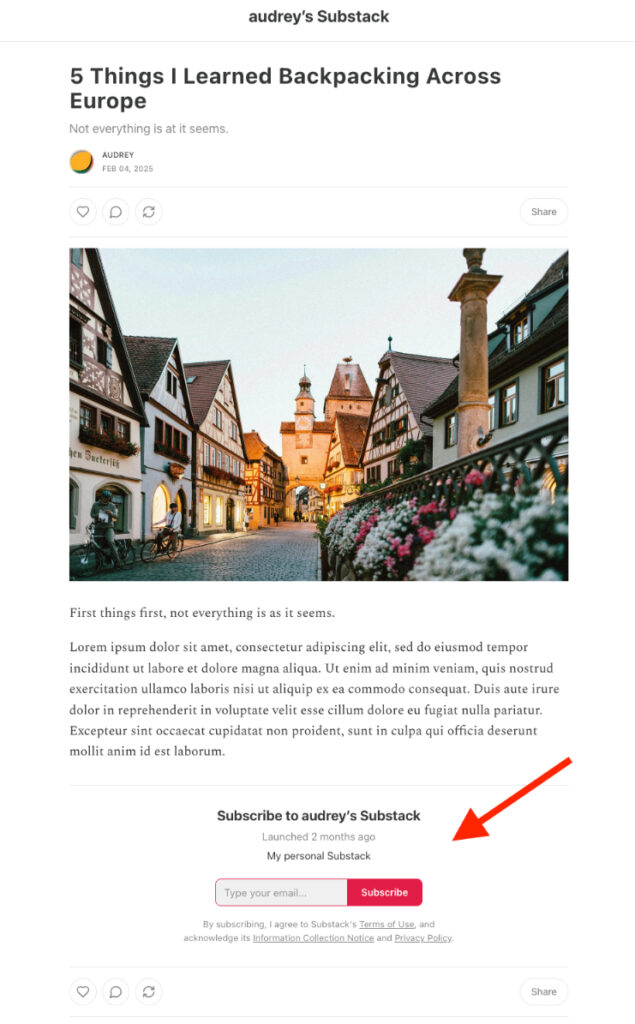
Non-subscribed readers can sign up for your Substack after reading a free article. (Source: Substack)
Publishing on Substack
Publishing on Substack is pretty straightforward. If you’ve ever used a blogging platform, you’ll easily find your way around. Inside your dashboard, select “New Post,” then choose between a text, audio, or video post. For the purpose of this article, let’s pretend I’m making a blog post, so I’ll choose “Text post.”
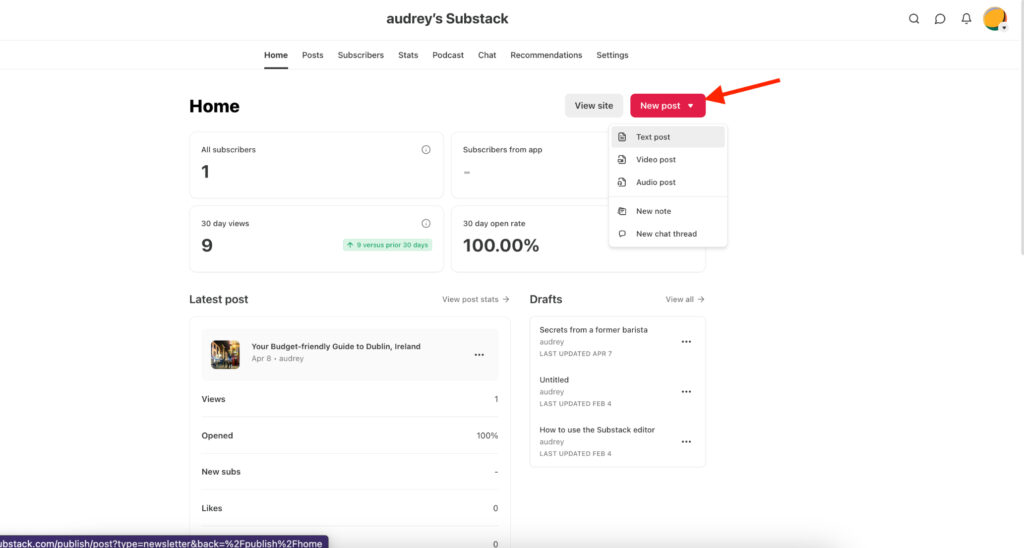
On your Substack dashboard, choose “New Post” and select the content you want to post. (Source: Substack)
What follows is a standard blog publishing platform where you can type or paste in your blog post, add images, and embed videos. Once you’re done with your post, hit the “Continue” button in the upper-right corner, then choose whether to have it as a free or subscriber-only post (you’ll need at least 50 followers to turn on subscribers).
If you set it to subscriber-only, your post will automatically be sent to their emails. If it’s a free post, it’ll be published to your Substack profile and viewable to everybody. You can also share it on social media.
Substack pros and cons: What I like and don’t like about it
Being a writer and content marketer, Substack is one of those platforms that’s always on my radar. I find it potentially useful for small businesses and small-time creators who want a direct line to their audiences.
It’s the best platform so far if you’re a writer or blogger of any kind, whether journalistic, literary, or creative, who wants a direct revenue stream from your readers. Conversely, for readers, it’s a direct way to support their favorite writers, creators, and influencers.
That’s one of Substack’s biggest assets. It also makes it easy to grow your online presence with built-in sharing tools for your content. But on the flip side, the interface can also make it a little difficult to interact with your community.
The good about Substack
Substack gives your content a direct line to your readers without relying on an algorithm. It also gives you a direct revenue stream from readers.
- Signing up for an account and publishing blogs is free, and once you have 50 subscribers, you can set your own monthly subscription fee.
- You can publish blogs for subscribers only or have them free for anyone to read.
- All free blogs have a newsletter sign-up form at the end to encourage readers to subscribe. They’re also automatically shareable on social media and can even be repurposed as images or videos.
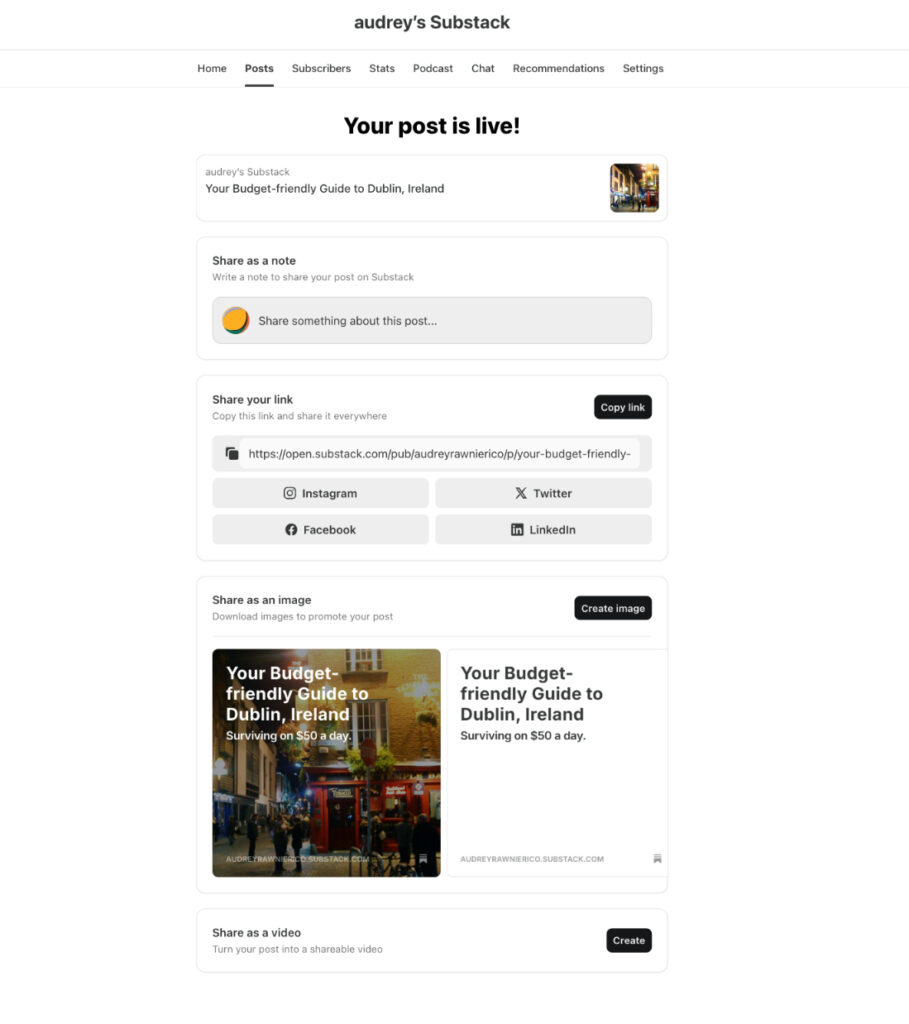
One of my favorite things about Substack is that it easily makes free blogs shareable on social media. (Source: Subtack)
The not-so-great about Substack:
The home feed isn’t great. It’s like a mix of Reddit and X that doesn’t give me blogs I want to read or newsletters I might want to subscribe to, but rather a feed of posts from other Substack publishers that aren’t always relevant to my interests.
There’s a sense that it tries to combine the functions of a social media platform and a publishing platform, but not always successfully.
- Unlike Medium, its writer community isn’t as active, so it won’t be very helpful if you want to network with an online writer community.
- Substack takes a 10% cut from your subscriptions. This means you need to constantly publish content to keep a constant revenue stream, which can lead to writing burnout if you don’t manage yourself well.
- The subscription-based model makes it difficult to grow an audience organically — you’ll need to actively promote your blog to attract more subscribers.
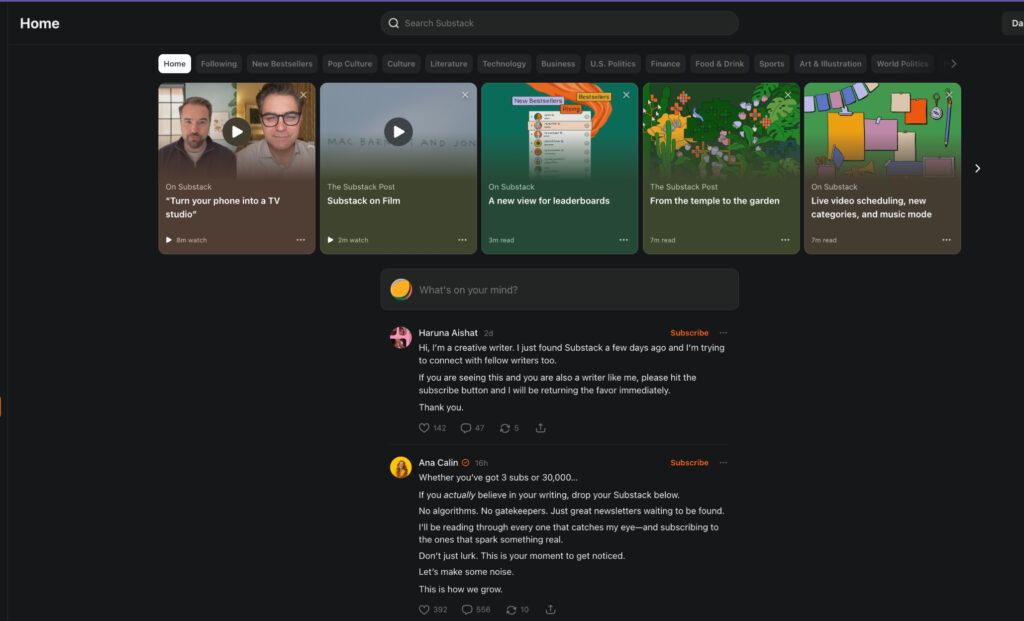
Substack’s platform is part publishing platform and part social media, which can sometimes make for a confusing experience. (Source: Substack)
Can Substack help market your brand and earn income? My thoughts (and who it’s best for)
So, with all Substack’s features, both great and not so great, is it still a viable platform for growing your brand online? Certainly — with the right know-how.
Ultimately, Substack’s advantages as a platform far outweigh its drawbacks, and it’s one of the best blogging platforms for building a sustainable fanbase and revenue stream if you’re a content creator of any kind.
For example, if you’re looking for ways to make money on Substack, it makes it easy by giving you full control over your monthly subscription charges. You can charge as much or as little as you like, from $5 a month.
How to use Substack to grow your brand and earn income
As mentioned, Substack’s best features are its ability to build an engaged subscriber base and create a direct revenue stream from your fans without an algorithm getting in the way.
Ultimately, Substack is best for content creators, influencers, indie essayists, small businesses wanting a content marketing platform, and journalists and creatives looking for somewhere to build their own publication.
- If you’re a content creator with an audience, use Substack to start monetizing your content. If you publish content on other free platforms, like WordPress or Medium, and already have an audience, Substack is a good platform to start monetizing your content. Publish on Substack, tell your followers to find you there instead, and once you have more than 50 subscribers, post exclusive content to entice paid subscriptions.
- Use Substack to build email newsletters and keep your audience engaged. Need a free publishing platform with a built-in email newsletter feature, but don’t want all the bells and whistles of a full website? Substack is a good alternative. You can easily set up an account for your business and publish newsletters to keep your audience engaged with your brand, and then share your blogs on your brand’s socials — all for free.
- Use Substack to expand your brand presence beyond your website or social media profiles. Websites and social media profiles are a good way to get your business noticed online organically on Google. However, email newsletters can take that further and turn your website visitors into engaged audiences. If you have a website, invite people to sign up for your newsletter for more content from your brand straight to their inbox.
- Use Substack to offer exclusive memberships (aka loyalty programs). Substack can be a great platform for building a loyalty membership program. Invite followers to sign up for your loyalty program, then send them exclusive content, deals, and vouchers via their emails.
- If you’re an independent writer or journalist, use Substack to build your personal brand and earn direct income from fans. Journalists also use Substack to build an independent voice and following outside of the publication they write for. It’s a good way to keep close contact with your biggest readers, continue publishing content in your niche, and give your fans a direct avenue to support you.
- If you’re a creative, use Substack to build your personal brand. If you’re an independent artist (digital or traditional), filmmaker, photographer, or other creative, Substack is also a good alternative to building a full website for creating an online platform.Publish your work on the platform and develop your unique creative identity, then start charging paid subscriptions whenever you’re comfortable (and have over 50 subscribers).
- Use Substack to share exclusive content with followers and build brand authority. Substack’s subscriber-only feature is a great tool for offering exclusive high-value content to your followers. Use it to share industry insights, case studies, or expert tips.
- Use Substack to build an engaged brand community. If you have an existing customer and social media community, use them to create an email list for targeted newsletters like thank-you and review request emails, and build an engaged brand community. You can even use emails to answer frequently asked questions. Of course, if your subscribers have comments or questions, make sure to reply to them.
How to get started on Substack
If you’ve determined that Substack can be a good platform for your needs, all that’s left is to start publishing. Thankfully, it’s easy. You’ll simply create an account on the website, follow a few Substack publications as part of the onboarding process, and then start posting.
1. Visit Substack and create an account
First order of business: Navigate to the Substack website and select “Create account” in the upper right corner. As part of the onboarding process, you’ll need to select a few publications to follow, which will show up in your home feed. After that, type in the email address to use for your account.
2. Explore your home page & publish your first post
After creating your account, you’ll be directed to your home page, where you’ll see all the publications you signed up for.
On your home page, navigate to “Dashboard” in the upper right corner. This is where you’ll be able to view all your posts, subscribers, and revenue. Select “New post” to publish your first post, then choose a content type (text, video, or audio), create, and publish.
3. Gain subscribers to start monetizing content
After publishing blogs, you’ll also be able to share their links on social media or repurpose them into images or short videos within Substack. Take advantage of these features to help your blogs reach more audiences and gain subscribers. When external audiences read your blog, they’ll see a sign-up form at the very end to subscribe to your content.
Your blog will also be published to the Substack community, where other creators can subscribe to your content. Once you reach 50 subscribers, you can turn on paid content in your settings and offer paid subscriptions.
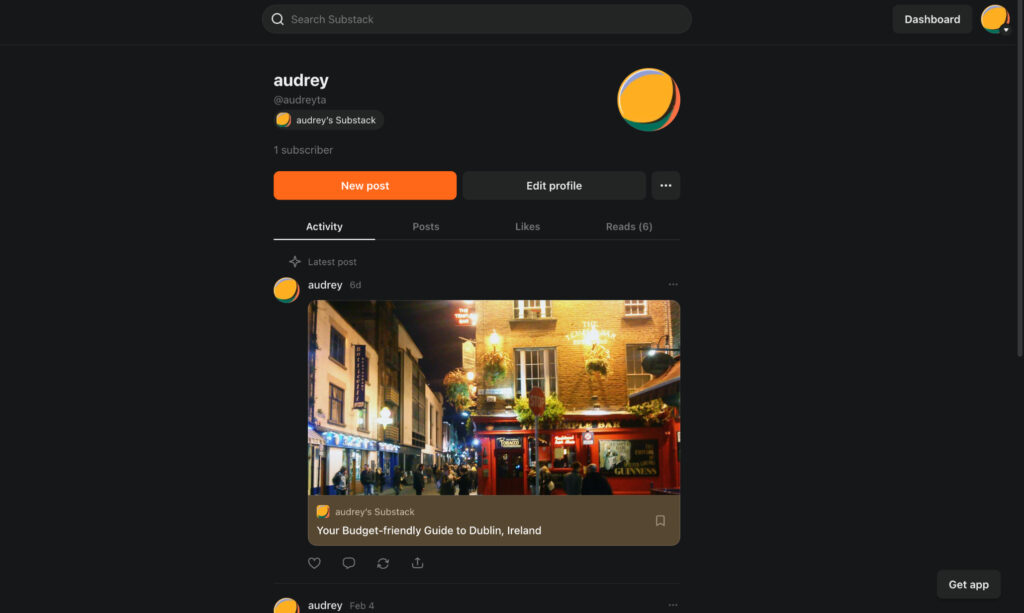
Your blogs will be published on your Substack profile, but you can also share their links on social media. (Source: Substack)
Best alternatives to Substack
Substack is one of the best content publishing platforms, but there are other options for publishing blogs on a more active writer community, monetizing creative work with subscription tiers, and sending subscriber emails. Some of the best alternatives to Substack are Medium, Patreon, and MailChimp.
 | ||
|---|---|---|
Great alternative for a simple and free blog publishing platform with an active writer community | A tier-based subscriber platform for sharing videos, music, art, and other creative work | A platform for building email marketing campaigns, with templates for newsletters, abandoned carts, and other campaigns |
Frequently asked questions (FAQs)
Substack is used to publish content, especially blogs, and earn money via paid subscriptions. Substack’s key asset is it gives you a direct revenue stream from subscribers instead of relying on algorithm to get your content found. It’s used mainly by independent bloggers, essayists, and journalists to earn from their blog posts, but small businesses can also use it to build brand authority through content or for sending email newsletters.
The main downside of Substack is its sometimes-convoluted interface, which tries to combine a publishing and social media platform but ends up confusing. It also has a subscription-based revenue model, making it difficult to earn money from your blog if you’re still starting out and don’t have an audience yet. You can only start charging subscriptions once you have at least 50 subscribers, and Substack takes a 10% cut from your earnings.
Substack is better than Mailchimp if your main objective is to publish blogs and essays regularly and earn a direct revenue stream from your subscribers. If you’re a writer first and foremost, Substack is the better choice because it has an intuitive content publishing platform, unlike Mailchimp, which is primarily an email marketing tool. Substack also has social media sharing features and the ability to publish free and paid newsletters.
Bottom line
If you’re a content creator or brand planning to start a blog, definitely look into Substack. It’s one of the best content publishing platforms, especially for providing a direct revenue stream from your subscribers instead of relying on Google’s ever-changing algorithms. Consequently, it gives subscribers a direct way to access your content and support your work.
